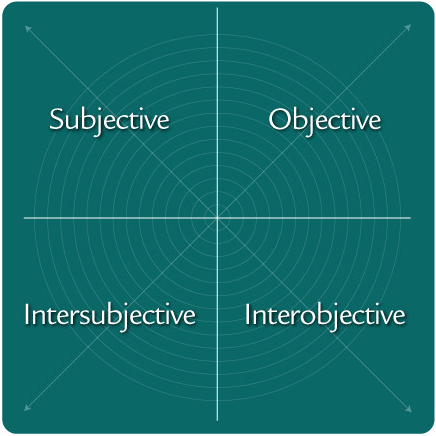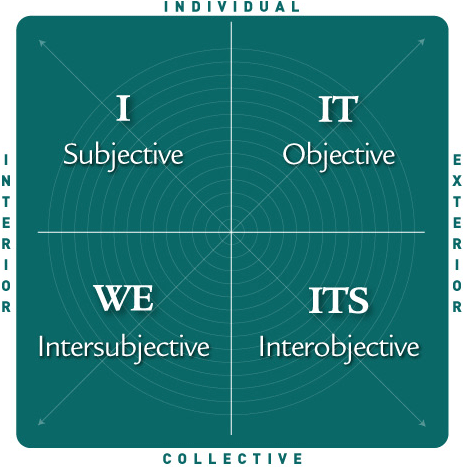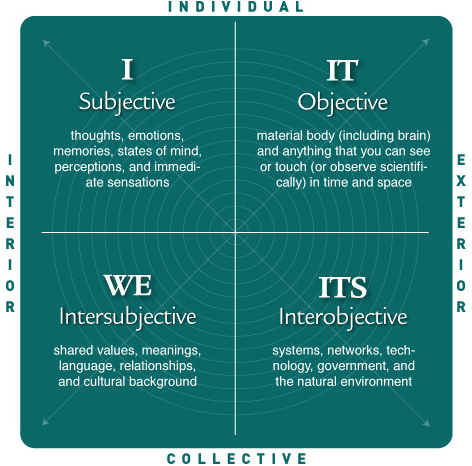[The following was from Holons-News.com, which is no longer an active link]:
What are the Four Quadrants?
According to Integral Theory, there are at least 4 primary dimensions or perspectives through which we can experience the world: subjective, intersubjective, objective, and interobjective.
These 4 perspectives, represented graphically, are the upper-left, lower-left, upper-right, and lower-right quadrants.


In the subjective—or upper-left—quadrant, we find the world of our individual, interior experiences: our thoughts, emotions, memories, states of mind, perceptions, and immediate sensations—in other words, our “I” space.
In the intersubjective—or lower-left—quadrant, we find the world of our colletive, interior experiences: our shared values, meanings, language, relationships, and cultural background—in other words, our “we” space.
In the objective—or upper-right—quadrant, we find the world of individual, exterior things: our material body (including brain) and anything that you can see or touch (or observe scientifically) in time and space—in other words, our “it” space.
In the interobjective—or lower-right—quadrant, we find the world of collective, exterior things: systems, networks, technology, government, and the natural environment—in other words, our “its” space.

What’s the point of looking at the world through a 4-quadrant lens?
Simple answer: Anything less is narrow, partial and fragmented! Integral Theory maintains that all 4 quadrants are real—and all are important. So, for example, to the question of what is more real, the brain (with its neural pathways and structures) or the mind (with its thoughts and perceptions), Integral Theory answers: BOTH.
Moreover, we add that the mind and brain are situated in cultural and systemic contexts, which influence both inner experience and brain activity in irreducible ways.
What’s more important in human behavior? The psychology of the mind (upper left), or the cultural conditioning of the individual (lower left)? Integral Theory answers, again: BOTH. What is more critical in social development? The habits, customs, and norms of a culture (lower left), or the products it produces (like gun and steel – lower right). Integral Theory answers: BOTH.
All four quadrants are real, all are important, and all are essential for understanding your world.
While some might like to reduce reality to the mind (upper-left quadrant), and others to the brain (upper-right quadrant), and still others to the influence of cultural context (lower-left quadrant), and yet others to the effect of systems (“it’s the economy, stupid!” i.e., lower-right quadrant), Integral Theory holds that ALL 4 QUADRANTS are indispensable. The more we can consciously include the 4 quadrants in our perspective, the more whole, balanced, healthy, comprehensive, and effective our actions will be.
And it all boils down to just four dimensions. It’s as easy as I, we, it, and its!
Click HERE for more about the concepts of development, growth and evolution within the Four Quadrant model.

